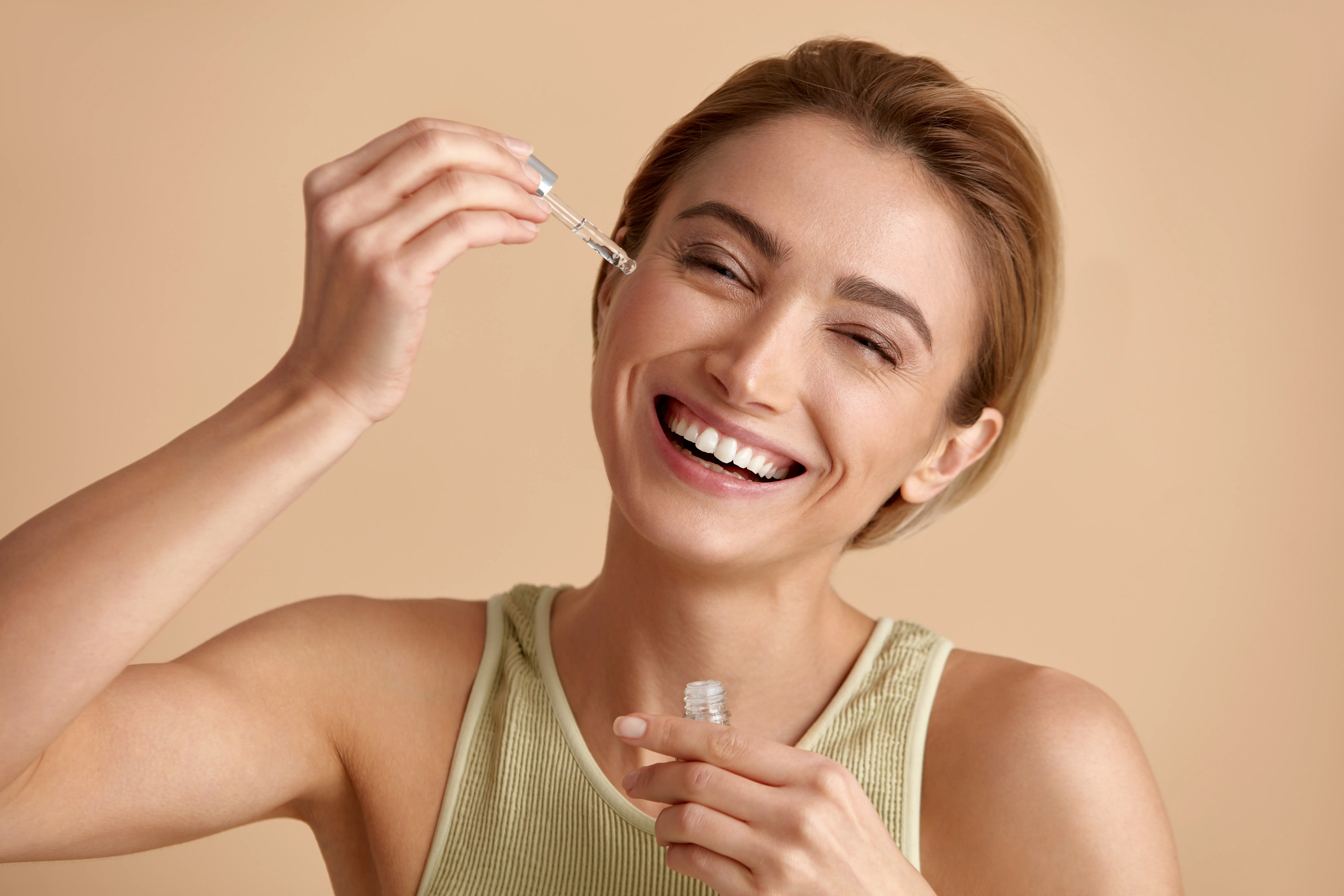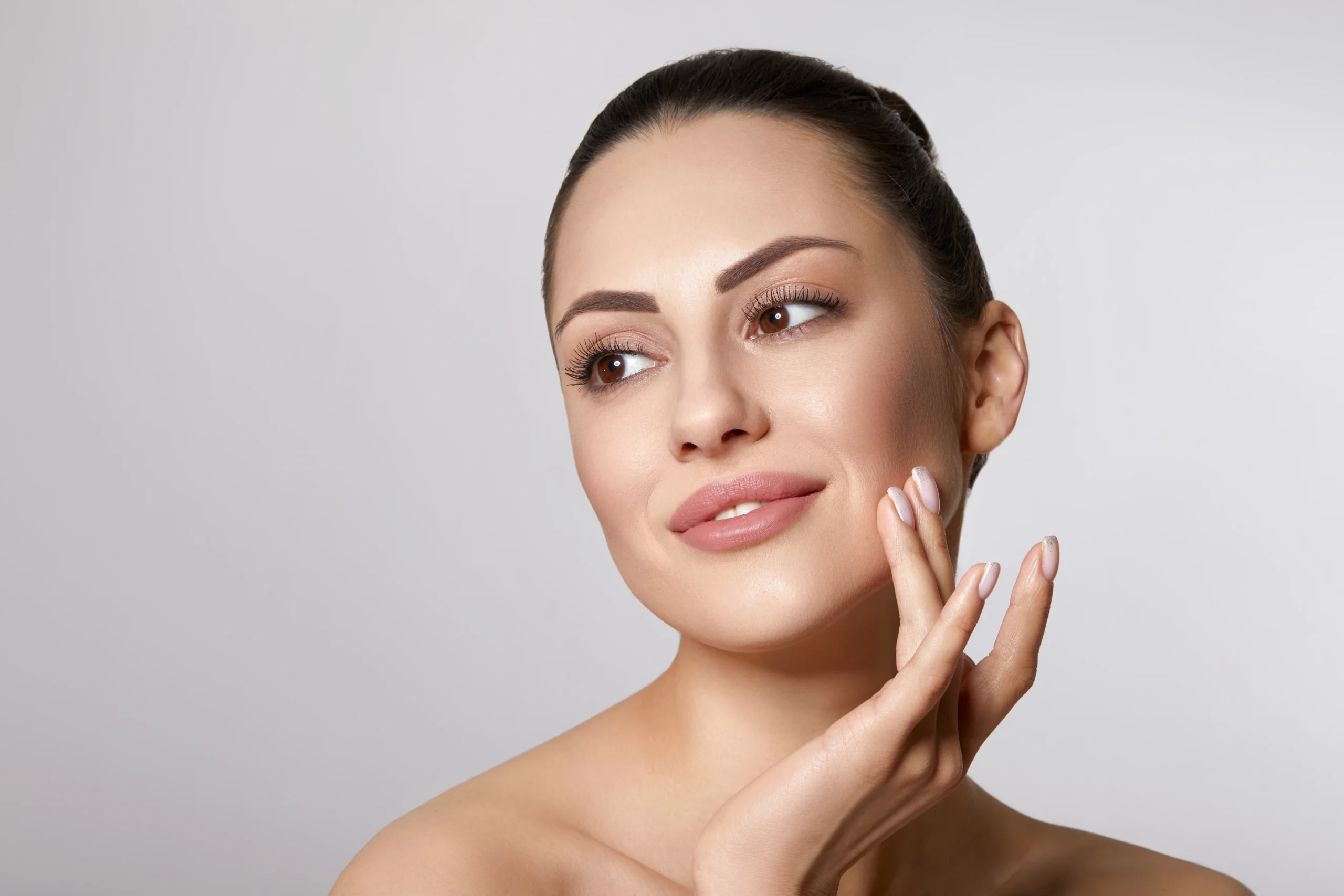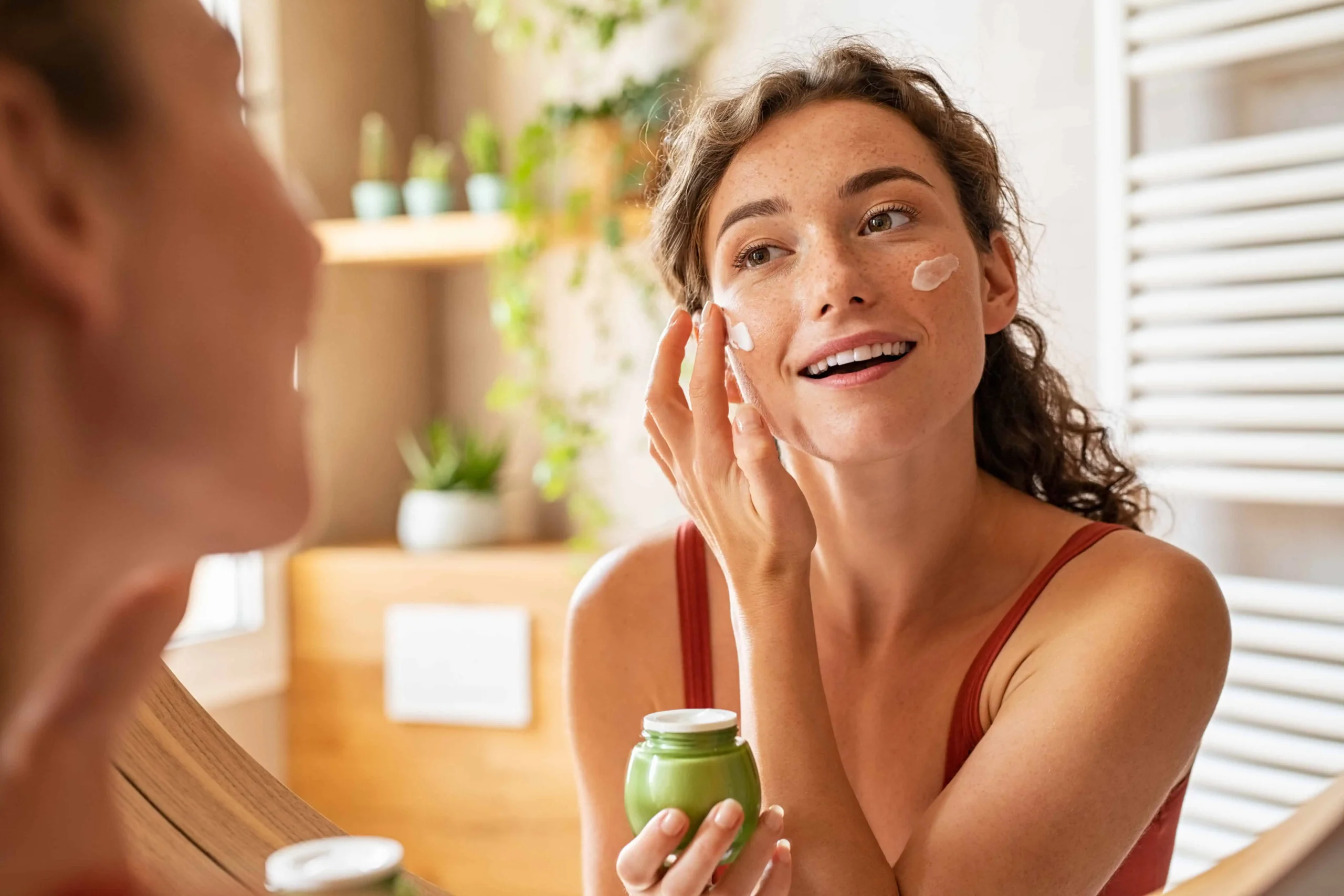Injectables are typically split into two categories: dermal fillers and neuromodulators/wrinkle relaxers. Botox, Xeomin, Dysport, and Jeuveau fall under the wrinkle relaxing (injectable neuromodulators) category, while Juvederm is a hyaluronic-acid based injectable dermal filler. The main difference between wrinkle relaxers and fillers is how the product targets wrinkles and reduces fine lines. Botox, Dysport, Xeomin, and Jeuveau work by relaxing the muscles that cause fine lines and wrinkles and work to prevent them from forming in the first place. The neurotoxin blocks nerve signals and temporarily relaxes the muscle where it is injected. Dermal fillers (like Juvederm) are composed of a hyaluronic acid gel that replaces lost volume, softens lines and wrinkles, lifts, and contours the face. Differentiating the kind and severity of lines you have can determine which injectable is right for you, as each product targets each problem areas differently.
Botox
Botox is onabotulinumtoxinA, and was the first anti-wrinkle injection on the market. Botox is FDA-approved to treat moderate to severe lines and wrinkles between the eyebrows, on the forehead, and around the eyes (“crow’s feet”). Due to proteins attached to the toxin, Botox must be refrigerated at all times. Additionally, antibodies can potentially form against these proteins, leading to possible resistance. Botox is directly injected into the muscle, which is relaxed, and therefore dynamic line formation is prevented. Subsequently, wrinkles can soften, or even go away completely. The lines Botox most effectively treats include forehead lines, glabellar lines (between the eyebrows), and crow’s feet (around the eyes). Results develop within 10-14 days after treatment and can last up to 2-5 months.
Dysport
Dysport is abobotulinumtoxinA and is FDA-approved to treat the glabellar lines, also referred to as frown lines. Similar to Botox, dysport has proteins attached to the toxin, but the toxin itself is slightly smaller than Botox. However, antibody formation and eventual resistance is also possible. Dysport must also be refrigerated at all times. It is recommended for people with moderate or severe frown lines. Dysport is injected in different areas of your forehead to target these lines, are typically visible as soon as two days, and can last 2-5 months. Patient’s report that Dysport tends to feel “less tight” and slightly “more flexible” than Botox. This is where personal preference comes in!
Xeomin
Xeomin is incobotulinmumtoxinA and is FDA-approved to treat the frown lines between the eyebrows. Xeomin differs from the others by lacking stabilizing proteins, and therefore does not require refrigeration before opening. Theoretically, patients are less likely to develop antibodies to Xeomin due to lack of attached proteins. However, many believe that the duration of action seems to be slightly less. The price for Xeomin is less than Botox, and people believe the results look and feel like Botox.
Jeuveau
Jeuveau is Prabotulinumtoxin A-xvfs and is the newest wrinkle-relaxer to hit the market that was only developed for aesthetic reasons. This neurotoxin is FDA-approved to treat the moderate to severe lines between the eyebrows that cause a “frowning face.” Structurally similar to Botox, Jeuveau has proteins attached to the toxin and therefore has to be refrigerated. The price for Jeuveau is less than Botox, which is also an advantage for many. Many have reported a quicker onset of action, but this neurotoxin is new to the market, so time will tell!
Juvederm
Juvederm treatments work to fill wrinkles from behind, injecting hyaluronic acid gel to firm and plump the skin. Its main ingredient, hyaluronic acid, is the ultimate hydrating ingredient and is found naturally in the dermis of your skin. Hyaluronic acid stimulates collagen production in your skin while also attracting and retaining moisture to give the skin a youthful look. Juvederm can be used to add volume and youth to areas of the cheek, moderate deep lines around the nose and mouth, and also soften frown lines.
What are the most popular injectables and why?
Hyaluronic Acid Dermal Fillers
The most popular category of wrinkle fillers is hyaluronic acid. Each type works in a slightly different way with varying results. Perhaps the reason for their popularity is that some research shows that repeated injections may help stimulate the body’s own natural production of collagen. That will help reduce the number of lines and wrinkles. They also absorb water and hydrate the skin from the inside out, leading to a brighter, more youthful appearance. There is also some evidence that less filler is needed over time to achieve the same look. Brand names of these fillers include but are not limited to:
- Belotero
- Juvederm
- Prevelle
- Restylane
Synthetic Dermal Fillers
This is a less popular category of fillers.
This smaller category of wrinkle fillers includes lab-made substances that are not related to anything found naturally in the skin.
All the fillers in this group have similar side effects, such as redness, swelling, or bruising at the site of the injection. Other side effects include nodules or bumps under the skin that can be seen and felt and that, in rare instances, may require surgery to remove.
The benefits include a longer-lasting effect. And at least one filler offers semi-permanent filling of lines and creases. Remember, products with longer-lasting effects are more likely to cause side effects. And when not used correctly, synthetic wrinkle fillers may cause disfigurement. Examples include:
- Bellafill
- Radiesse
- Sculptra
- Silicone
Collagen Dermal Fillers
Perhaps, least popular on the “totem pole” is this category. Most collagen injections began to break down as early as 1 month after treatment. Because these wrinkle fillers were made from an animal source, they also had a higher rate of allergic reaction and required allergy testing beforehand. This type of filler is not widely used anymore, due to inability to dissolve the substance if necessary. Examples include:
- Cosmoderm
- Evolence
- Fibrel
- Zyderm
- Zyplast
Questions You May Have
Are there reasons why a patient would choose certain toxins over others? (In addition to what is mentioned about Xeomin and the proteins)
It depends on anatomy and personal preference. Botox, Xeomin and Jeuveau tend to spread less than Dysport, and also feel more stiff and tight. Dysport has a flexible feeling, is a slightly smaller molecule, and does spread a little more. This can be great for larger muscles to increase the diffusion, but can be challenging in a forehead with very lateral line formation, as it may affect eyebrow position. This is when the injector must make a decision and also educate their patient on the best option for them.
Many patients do feel one works better than the others, and this is often helpful.
And jumping off of that, are there certain ones that are better for certain people? For example, I heard Dysport spreads more so is that why it’s a great option for younger patients (as she mentions, under 65) because it’s essentially cheaper since you need less of it. Is that true?
The amount needed depends on the area and the patient. The units of Botox/Xeomin/Jeuveau are measured differently than Dysport, but effectively, you should be using equivalent “doses” to achieve optimal results. Dysport has been shown to last slightly longer in patients, and is specifically great for very active individuals with high metabolisms. That being said, there shold be a discussion about what the patient prefers and what areas are being treated.





